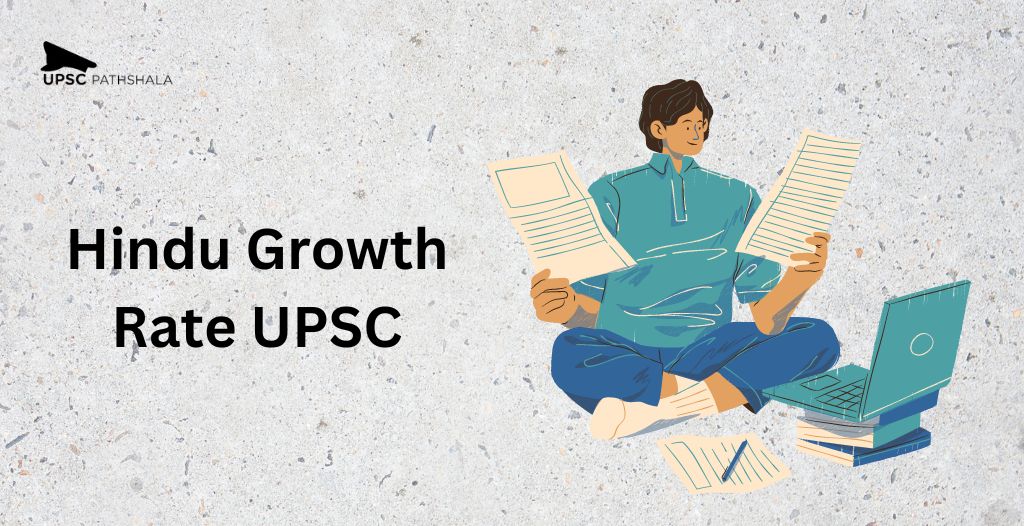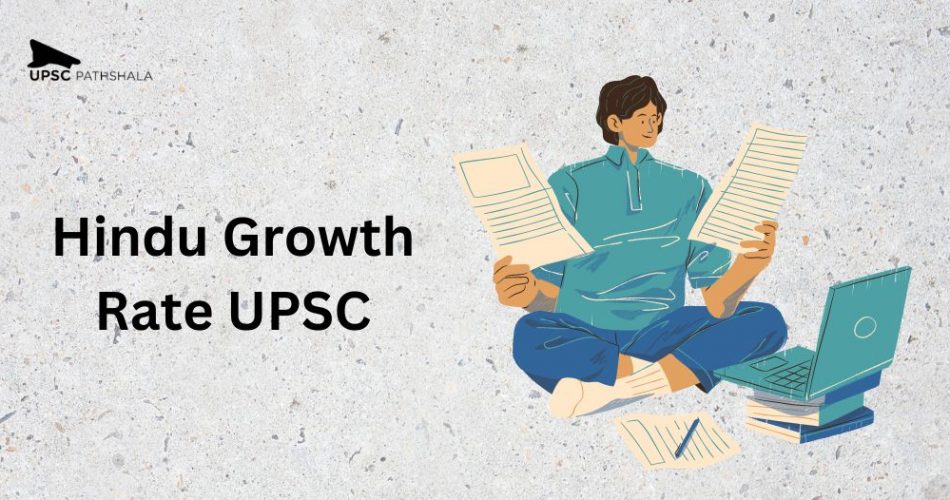Hindu Growth Rate is a term that gained popularity in the 1980s and 1990s to describe the slow growth of the Indian economy during that period. Economist Raj Krishna coined the term in the 1980s to describe India’s low growth rate, which was about 3.5% per annum.
However, the term has been considered controversial, and many have criticized it for being derogatory towards the Hindu religion. Nonetheless, it remains a crucial topic for UPSC’s current affairs notes.
What is Hindu Growth Rate?
The Hindu Growth Rate is a term coined to describe the low growth rate of the Indian economy during the 1980s and 1990s. The growth rate stagnated at around 3.5% per annum, which was significantly lower than other developing countries like China and South Korea.
Features of Hindu Growth Rate
The features of the Hindu Growth Rate include
- High inflation: The high inflation rate was one of the significant features of the Hindu Growth Rate. The inflation rate was around 8-10% per annum, which made it difficult for the common man to meet their daily needs.
- Slow economic growth: Slow economic growth was the primary characteristic of the Hindu Growth Rate. The growth rate was stagnant at around 3.5% per annum, which was much lower than in other developing countries.
- Low investment: The low investment rate was another significant feature of the Hindu Growth Rate. The investment rate was around 19-22% of GDP, which was much lower than in other developing countries like China and South Korea.
Concerns Flagged by Raghuram Rajan
Raghuram Rajan, former Governor of the Reserve Bank of India, has flagged several concerns related to the Hindu Growth Rate. According to him, the low growth rate was primarily due to low investment, lack of infrastructure, and poor policies. He also criticized the government for focusing on short-term goals rather than long-term goals, which has resulted in the slow growth of the economy.
Important UPSC Current Affairs Notes on Hindu Growth Rate
- The Indian economy has grown significantly since the 1990s, and the growth rate is now above 7%.
- The government has taken several initiatives to boost economic growth, including the Make in India program, Digital India program, and Startup India program.
- The government has also focused on infrastructure development, including constructing highways, airports, and ports.
- The Indian economy is expected to grow at a faster pace in the coming years, primarily due to the government’s initiatives and the country’s demographic dividend.
How Beneficial are UPSC Online Coaching?
UPSC Online Coaching is an excellent option for those who are unable to attend regular classes due to their busy schedules or other reasons. Online coaching provides flexibility and convenience, allowing candidates to study at their own pace and convenience. It also offers access to experienced teachers, study materials, and online resources, which can help candidates prepare for the UPSC exam more effectively.
IAS Online Coaching Benefits
IAS Online Coaching offers many benefits to aspirants who are preparing for the UPSC exam. Some of the key benefits of IAS online coaching include
- Convenience: Online coaching allows aspirants to attend classes from the comfort of their own homes or anywhere with an internet connection. This makes it easier for working professionals or those living in remote areas to access high-quality coaching.
- Flexibility: Online coaching offers the flexibility to study at your own pace and schedule. Aspirants can review lectures and study materials as many times as needed to fully understand the concepts.
- Experienced Faculty: Online coaching institutes employ experienced faculty members who have a deep understanding of the UPSC exam syllabus and exam pattern. Aspirants can benefit from their expertise and guidance.
- Study Material: Online coaching institutes provide aspirants with comprehensive study material, including books, notes, and online resources, that are designed to help them prepare effectively for the UPSC exam.
- Mock Tests: Online coaching institutes also offer regular mock tests, which are designed to simulate the actual UPSC exam. These mock tests help aspirants to evaluate their progress and identify areas where they need to improve.
- Cost-effective: Online coaching is often more cost effective than traditional coaching, as aspirants do not need to pay for transportation, accommodation, or other expenses associated with attending regular classes.
IAS online coaching offers several benefits to aspirants who are preparing for the UPSC exam. Aspirants can benefit from the convenience, flexibility, experienced faculty, comprehensive study material, mock tests, and cost-effectiveness of online coaching to achieve their goal of becoming an IAS officer.
Conclusion
The Hindu Growth Rate is an essential topic for UPSC current affairs notes, as it highlights the challenges faced by the Indian economy in the past and the measures taken to overcome them.
The Indian economy has come a long way since the 1980s and 1990s, and the government’s initiatives and the country’s demographic dividend are expected to drive economic growth in the coming years.







